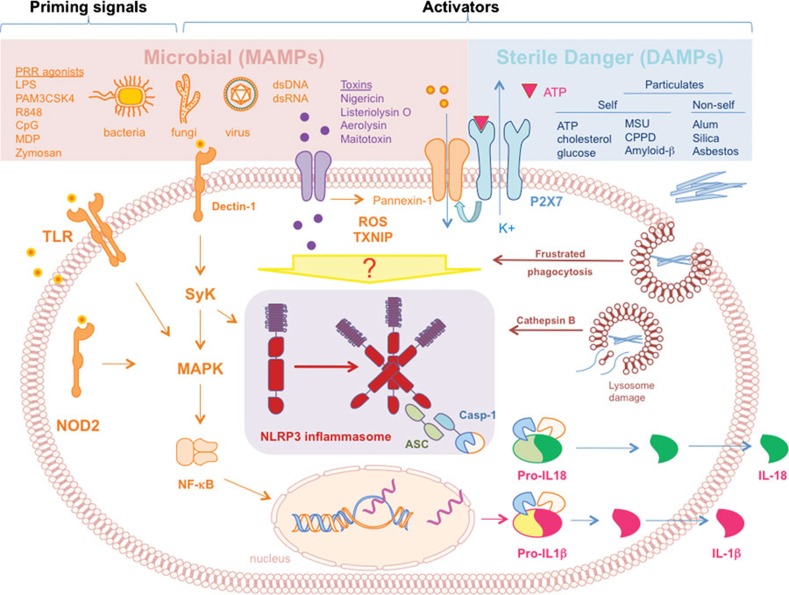Figure 2.
NLRP3 inflammasome activation pathways. The assembly of the NLRP3 inflammasome in innate cells is induced by several different stimuli, including MAMPs (pink box) or sterile DAMPs (light blue box). A first priming signal delivered predominantly by MAMPs, such as LPS, is required to promote IL-1β transcription via NF-κB translocation to the nucleus. Inflammasome oligomerization and activation can be induced by bacterial and fungal moieties, pore forming toxins, or viral dsDNA and RNA. Upon binding to the P2X7 receptor, ATP also triggers inflammasome formation through K+ efflux and opening of the pannexin-1 channel. Particulates, such as MSU, fibrillar amyloid β, CPPD, silica, asbestos and alum, are phagocytosed and activate the inflammasome. MSU can also promote inflammasome formation via frustrated phagocytosis. ROS formation induced by certain inflammasome activators also mediates inflammasome assembly via recruitment of TXNIP. Inflammasome oligomerization results in ASC-mediated caspase-1 activation responsible for cleavage and release of IL-1β and IL-18 cytokines. ASC, apoptotic-associated speck like protein containing a caspase recruitment domain; CPPD, calcium pyrophosphate dihydrate; DAMP, danger-associated molecular pattern; LPS, lipopolysaccharide; MDP, muramyl dipeptide; MAMP, microbial-associated molecular pattern; MSU, monosodium urate; ROS, reactive oxygen species; TXNIP, thioredoxin-interacting protein; Casp-1, caspase-1.

